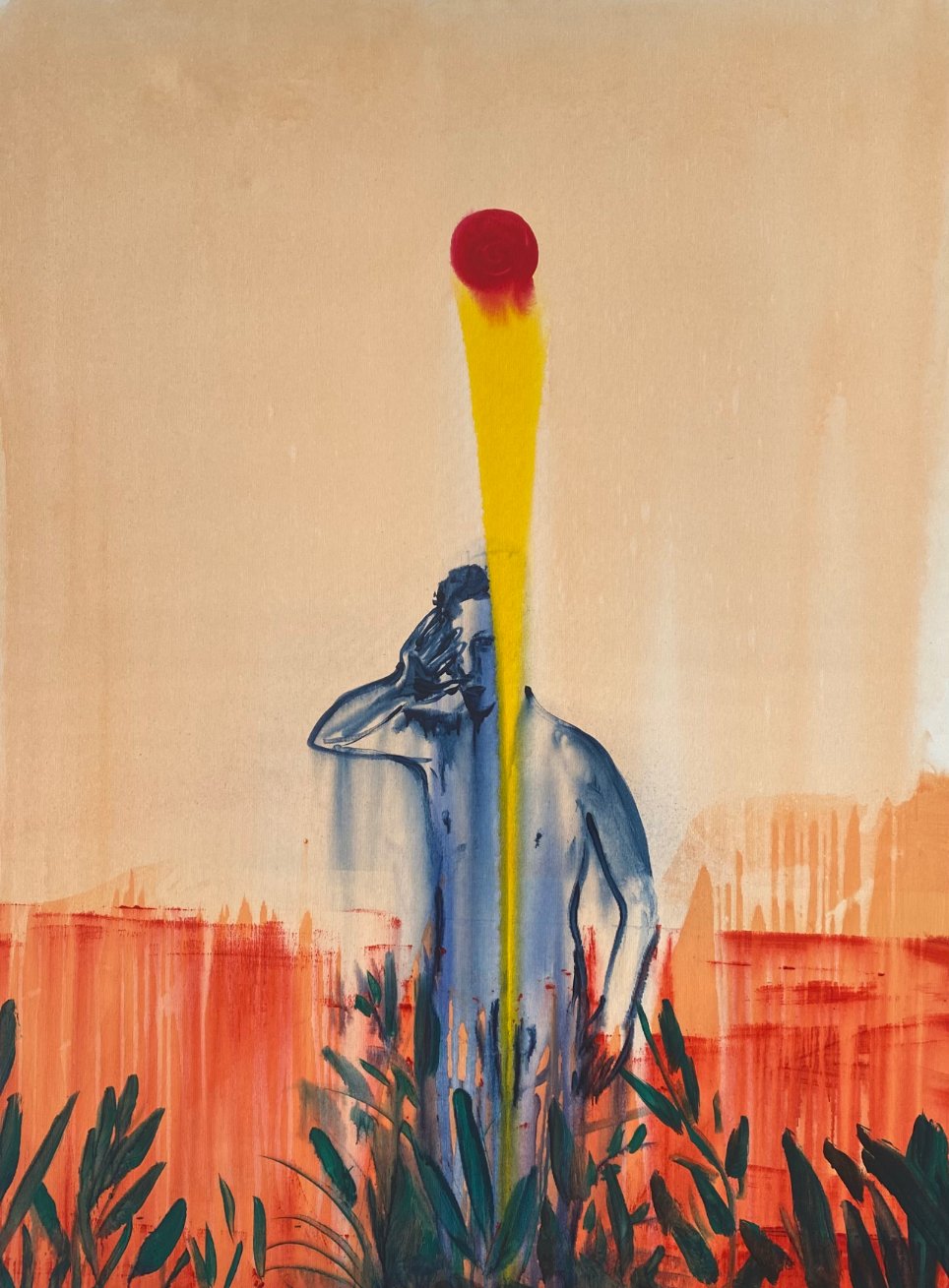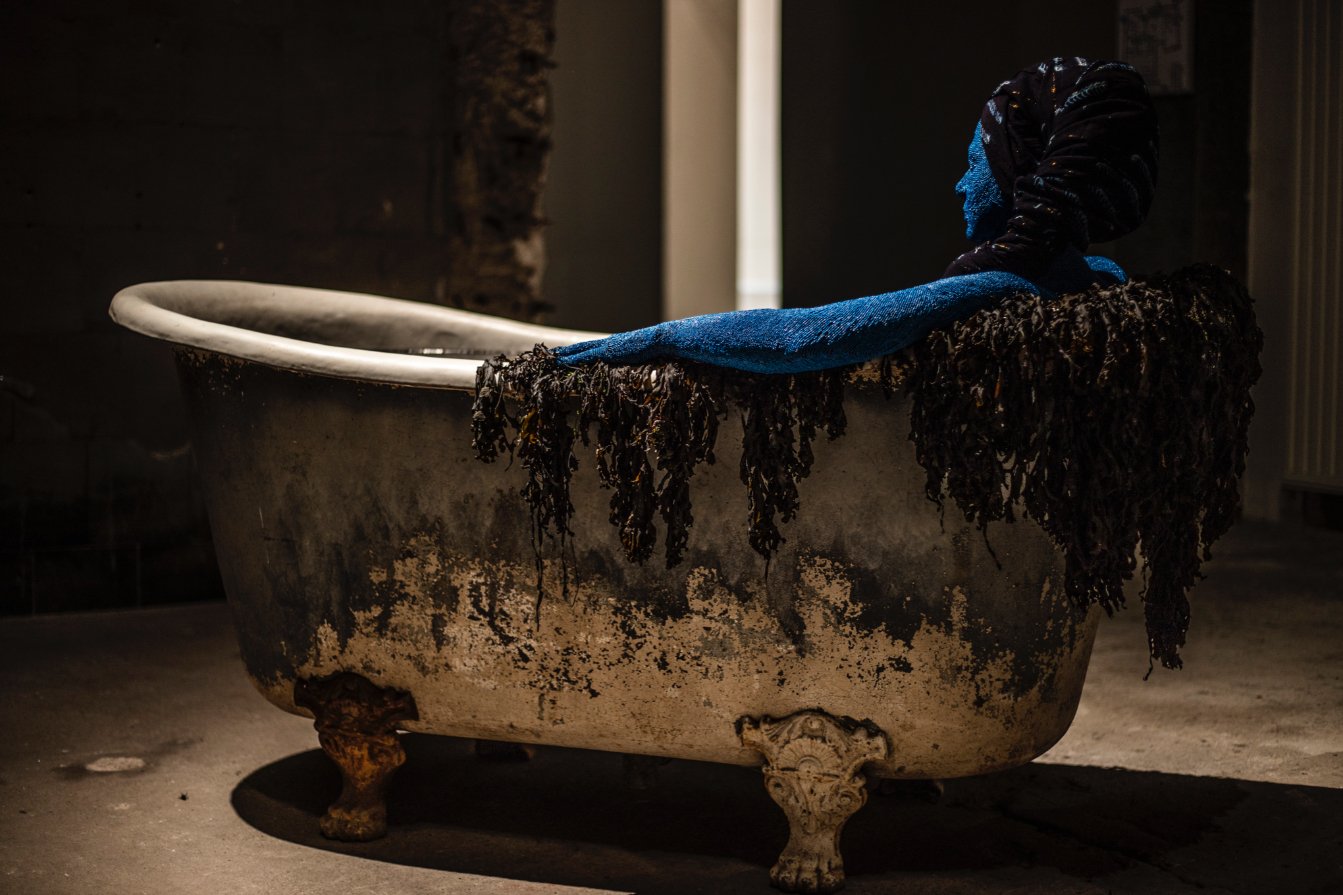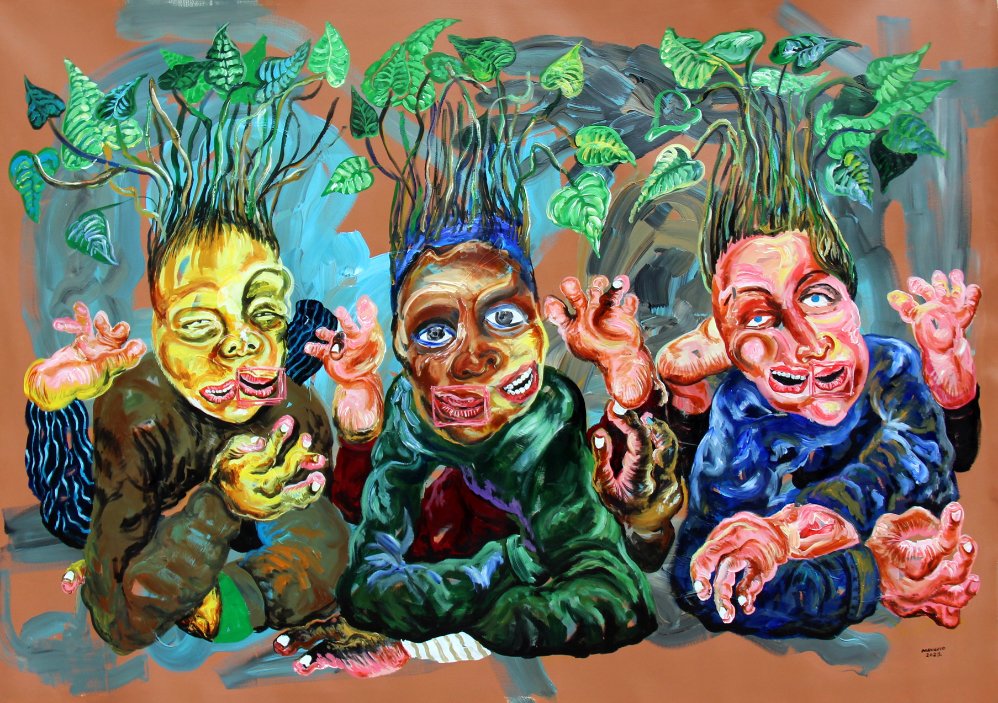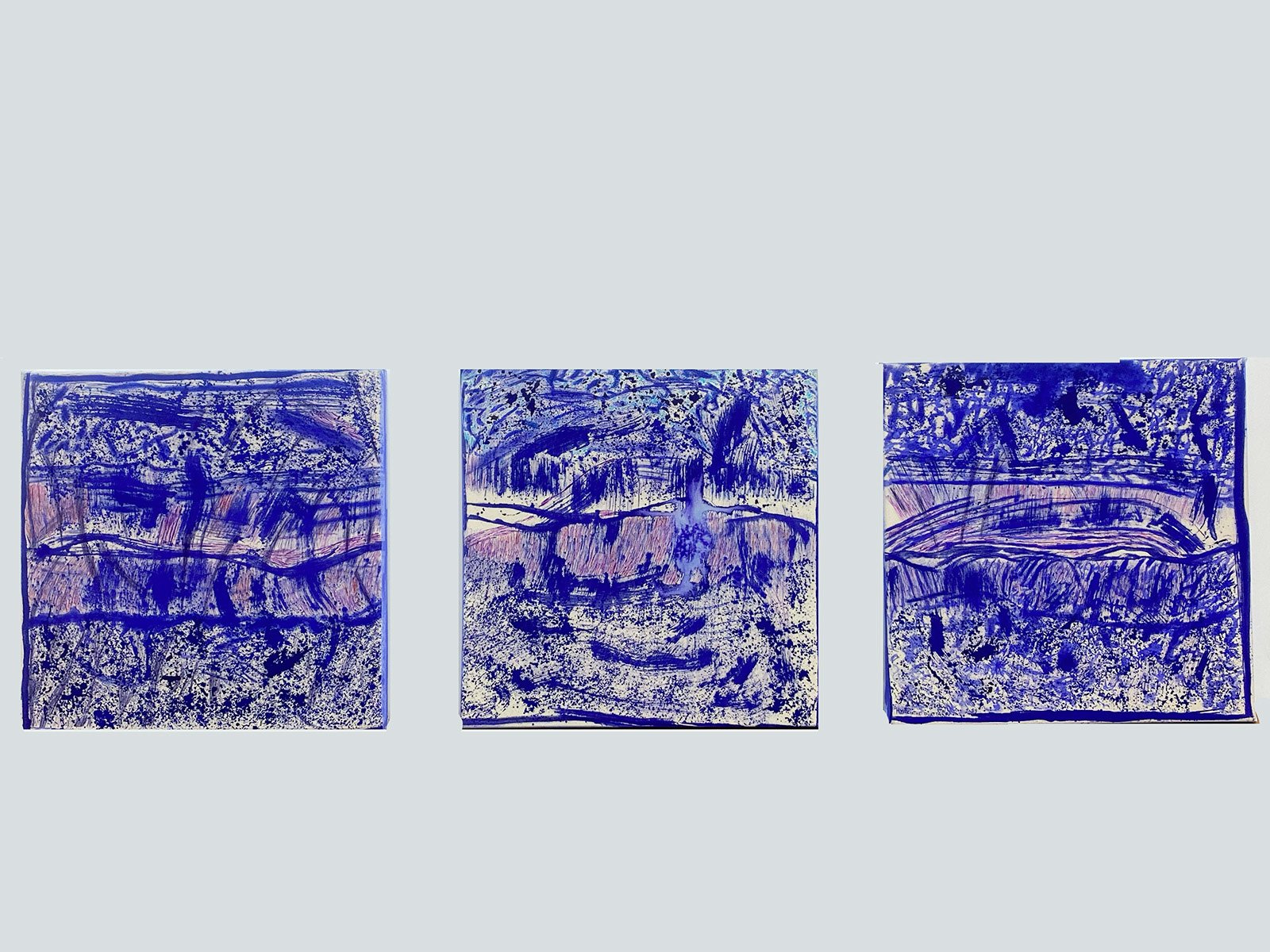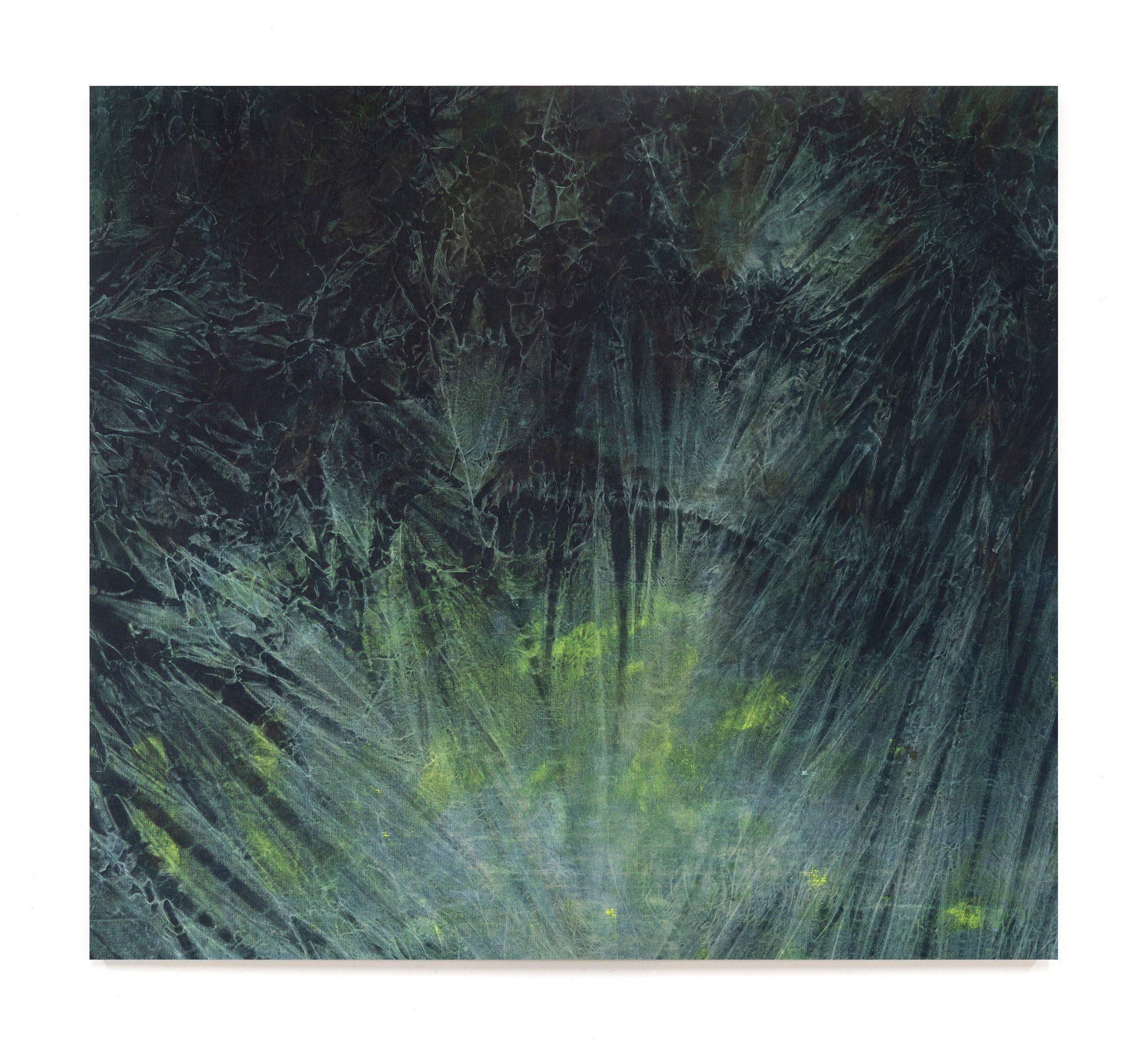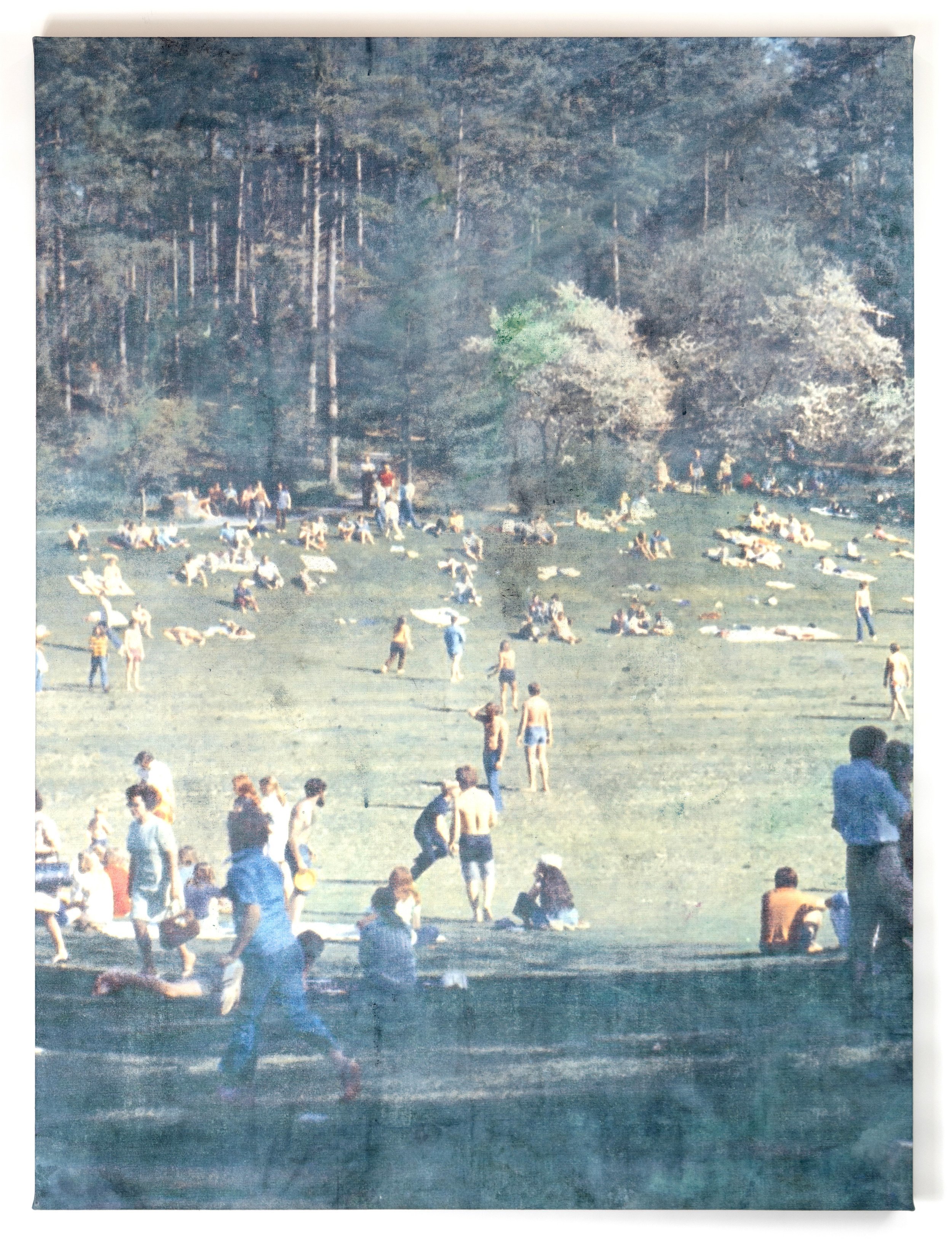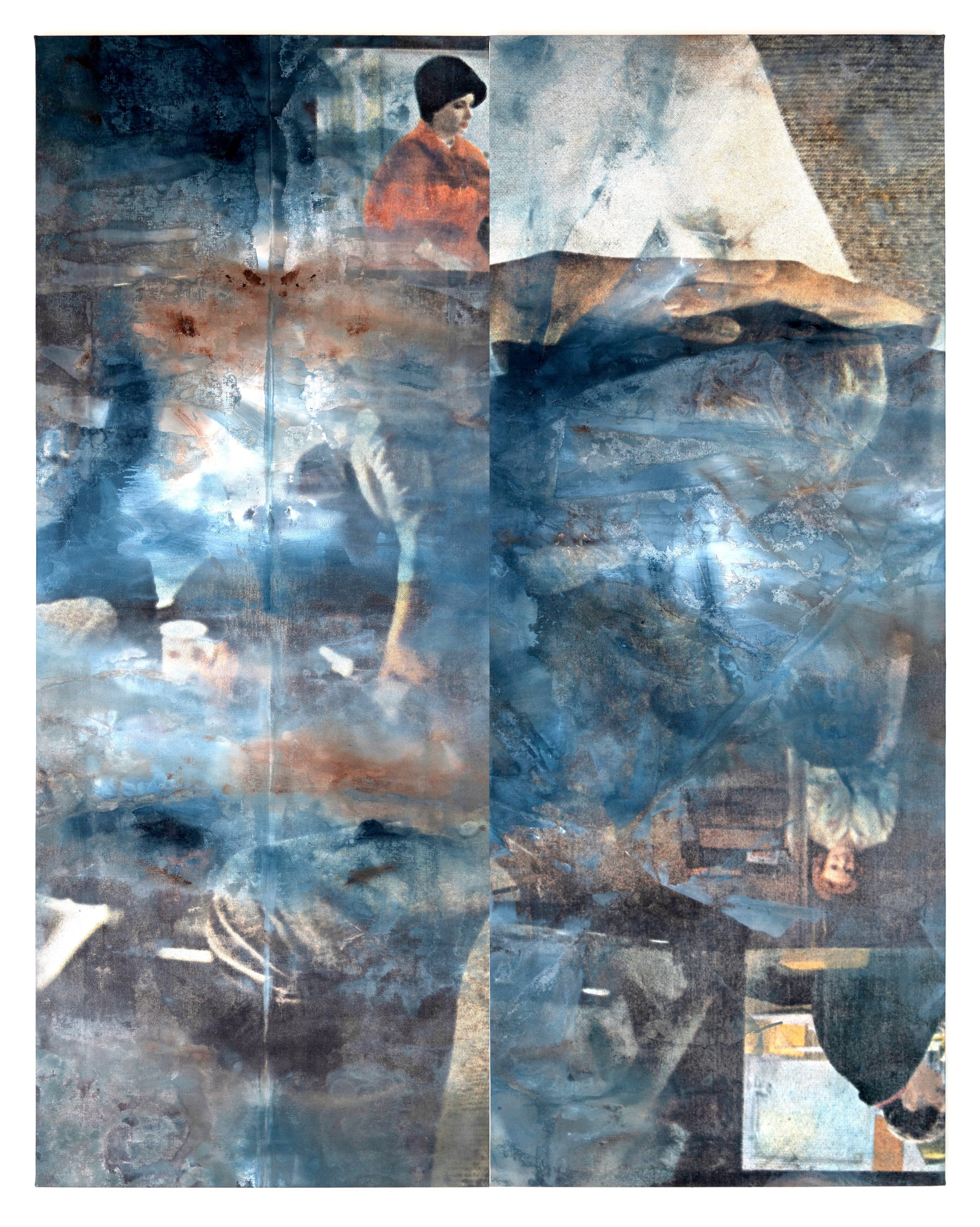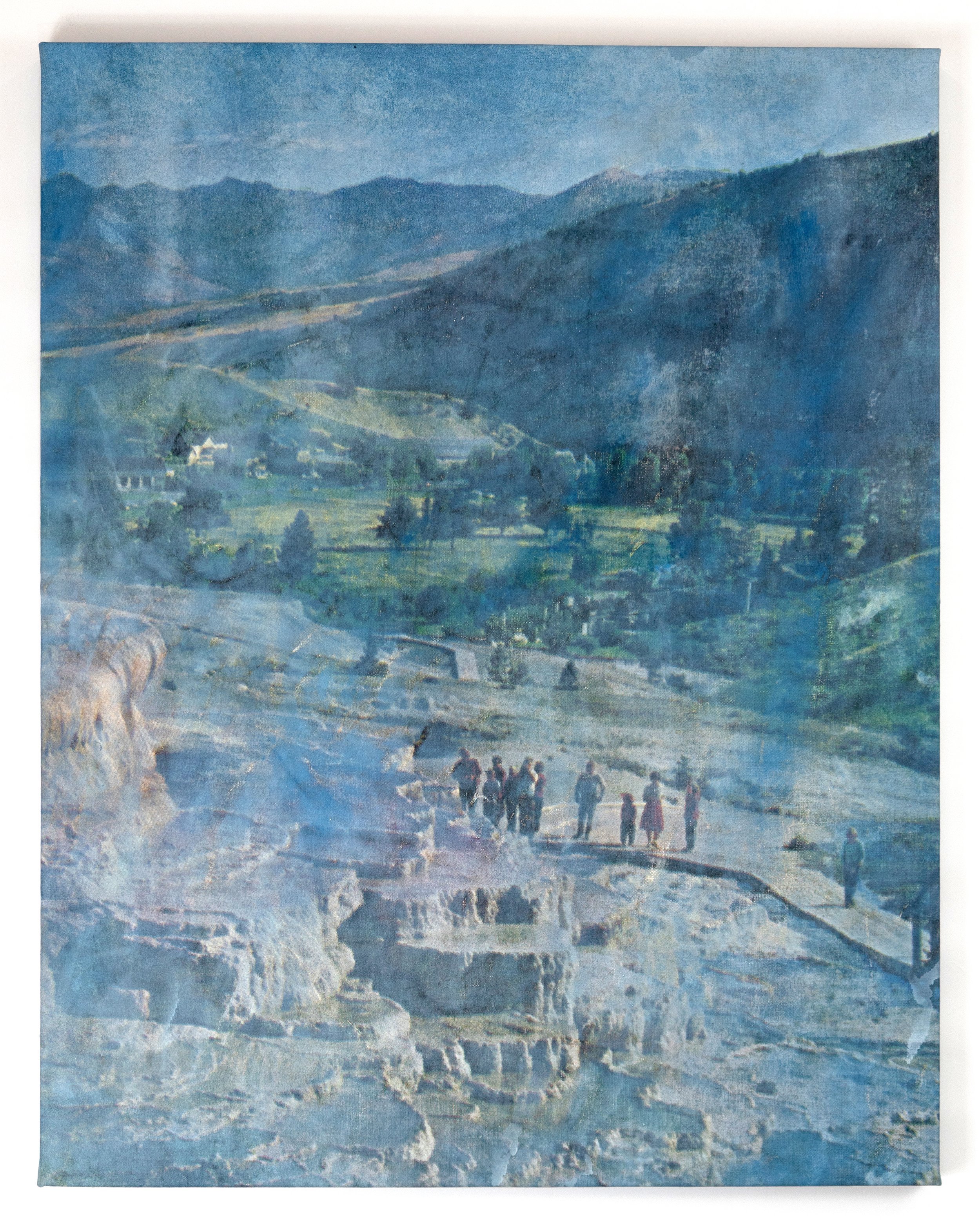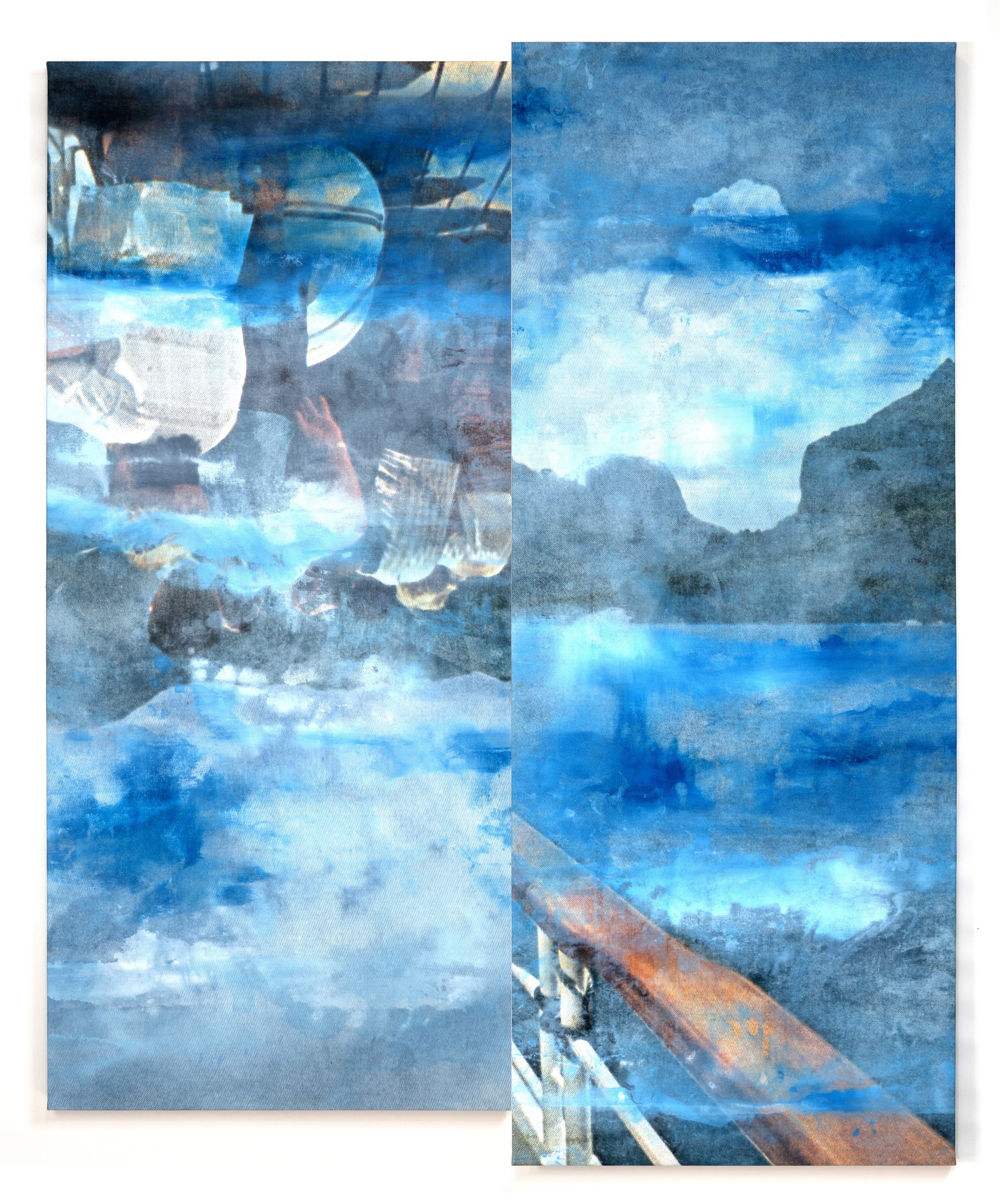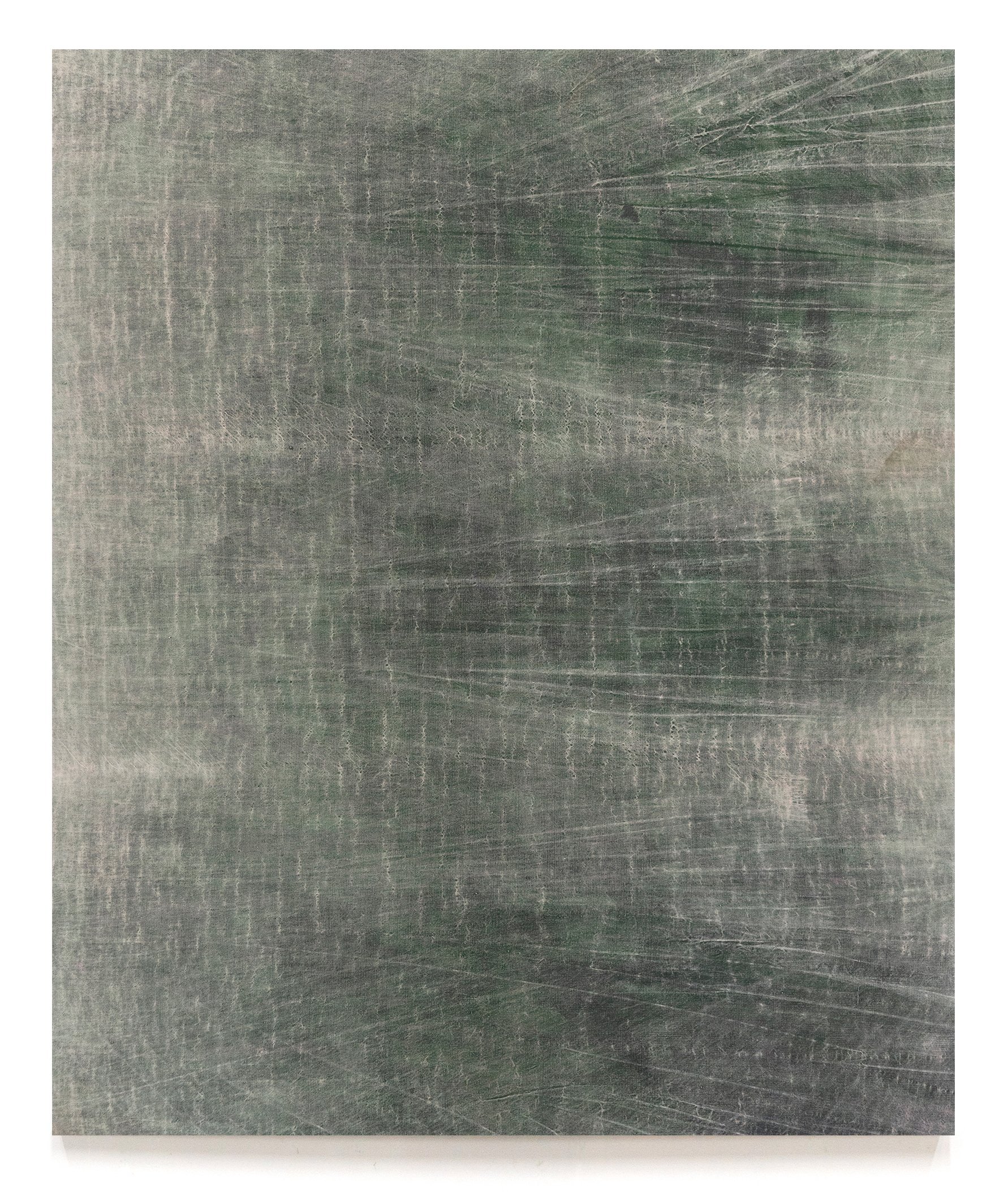text by Barbara Norton
Much like nature itself, Ce que nous donne la terre (What the earth Gives Us) is an exhibition comprised of many disparate parts: resin, beads, and acrylic are to the show what beetles, silt, and chlorophyll are to our natural world. Also like the natural world, Ce que nous donne la terre is undeniably united. With fourteen different works on view, each artist challenges what it is to be a human who is both part of that precious, quivering equilibrium of the Earth and a disruptor of it.
While the human is centered throughout the show, we are always in our most early context—nature. In doing so, the relationship between us and world is reimagined countless times, a testament to its eternal loamy dynamism. In Beya Gille Gacha’s haunting Lady Mirror, a blue Mother Nature bathes in black water and algae. She is tranquil, but perhaps not kind—humid anger billows from her like steam from a bath. Though she is a humanoid figure, her lapis lazuli-colored skin is jarring and unnatural against the dirty porcelain.
A blue-bodied figure also appears in Omar Mahfoudi’s Hidden behind the sun. Shielding his visage from the violent, lone smear of sunlight, Mahfoudi’s blue man is blurry with cool, wet anguish beneath the red-yellow light.
The people of L’Eden are—perhaps—more at peace with their world. Blending into the foliage entirely, their jewelry, clothing, and hair are the only denotation of where the leaves end and their bodies begin. Maybe they have returned to the earliest beginning among the lush, green leaves. But there is also a more sinister possibility: are the figures making a return to their roots, or are they trapped behind the rapidly encroaching leaves? Will the foliage continue to grow and twist across the canvas until it blots them out entirely?
This tenuous relationship winds itself through each work in Ce que nous donne la terre, on view through 23rd September at AFIKARIS Gallery. What is our place in a world where we are both the product and demise of natural creation?
Ce que nous dans la terre is on view through 23rd September at AFIKARIS Gallery 7 Rue Notre Dame de Nazareth.

